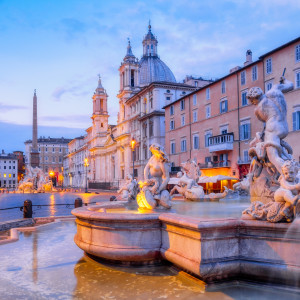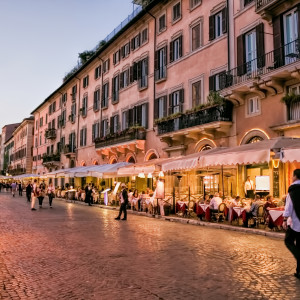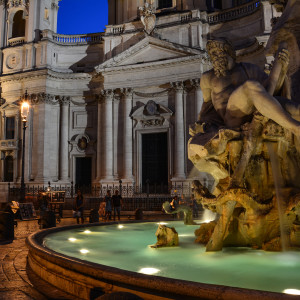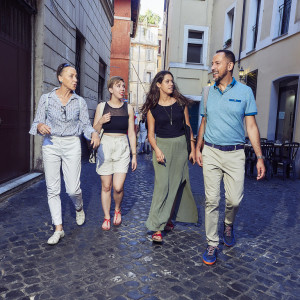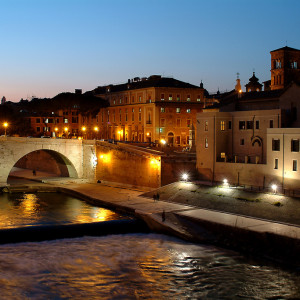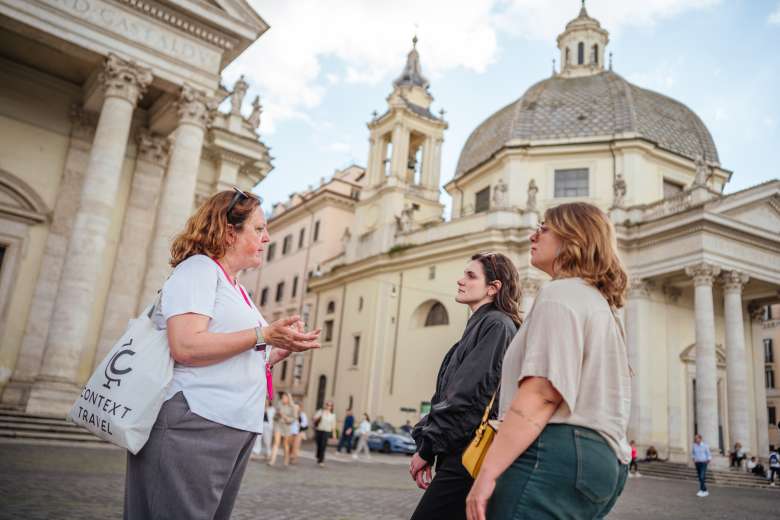Tour Details
Duration
2 hours
Product Type
Tour
Venues
- Campo dei Fiori
- Piazza Navona
- Santa Maria della Pace
- Chiesa Nuova
- Ponte Sisto
Select a date
Tour Description
This two-hour twilight tour of Rome is organized as an evening passeggiata, which is a traditional Italian stroll in the late hours of the day taken to appreciate the city and rub shoulders with fellow citizens. In this case, we're bringing along a local insider who will shape our stroll into an introductory Rome night tour. Not only will we discover the city at its most glorious time, but we'll also receive a solid, broad introduction to life in Rome.
We’ll begin our walk in one of the most famous public spaces in Rome, Piazza Navona. Here, we will discuss the political and historical background of the piazza, as well as its modern incarnation as a magnet for street performers and visitors in search of that perfect outdoor cafe seat (complete with the direct view of Bernini's fabulous fountain). This tour is as much about the life and spirit of Rome as it is about the history, and so we'll look closely at how Romans use the city and think about what it's like to be a local. Moving on, we'll continue to the side streets around Piazza Navona, which in recent years has morphed into a hip area crammed with wine bars, art galleries and funky designer boutiques.
Next we may explore the elegant streets of via Giulia and via Monserrato, filled with Renaissance palazzos, Baroque churches, and artisan workshops, or head to the area of the Campo de' Fiori—one of the busiest piazzas in Rome. If time allows, we’ll end our Rome night tour on the picturesque Ponte Sisto, which offers great views of the Tiber in both directions and a glimpse of Michelangelo's cupola of St. Peter's Basilica (the subject of our St. Peter's Basilica Tour and a gateway to another exciting Roman neighborhood, Trastevere).
We’ll begin our walk in one of the most famous public spaces in Rome, Piazza Navona. Here, we will discuss the political and historical background of the piazza, as well as its modern incarnation as a magnet for street performers and visitors in search of that perfect outdoor cafe seat (complete with the direct view of Bernini's fabulous fountain). This tour is as much about the life and spirit of Rome as it is about the history, and so we'll look closely at how Romans use the city and think about what it's like to be a local. Moving on, we'll continue to the side streets around Piazza Navona, which in recent years has morphed into a hip area crammed with wine bars, art galleries and funky designer boutiques.
Next we may explore the elegant streets of via Giulia and via Monserrato, filled with Renaissance palazzos, Baroque churches, and artisan workshops, or head to the area of the Campo de' Fiori—one of the busiest piazzas in Rome. If time allows, we’ll end our Rome night tour on the picturesque Ponte Sisto, which offers great views of the Tiber in both directions and a glimpse of Michelangelo's cupola of St. Peter's Basilica (the subject of our St. Peter's Basilica Tour and a gateway to another exciting Roman neighborhood, Trastevere).
FAQ
What is the dress code inside the churches in Rome?
You might visit some churches in this tour, if open. All churches require modest dress. Men should wear slacks, and women should wear slacks or skirts below the knee. Shoulders must also be covered. If you are intent on wearing spaghetti straps or a halter top, bring a shawl and expect to keep it around you. Shorts above the knee are not allowed.
You might visit some churches in this tour, if open. All churches require modest dress. Men should wear slacks, and women should wear slacks or skirts below the knee. Shoulders must also be covered. If you are intent on wearing spaghetti straps or a halter top, bring a shawl and expect to keep it around you. Shorts above the knee are not allowed.
Experts
Where You'll Start
–
342 Reviews
Reviews can only be left by Context customers after they have completed a tour. For more information about our reviews, please see our FAQ.
Massimo was personable and very informative! We had a great tour! Thank you!
Diane
Reviewed on:
Sep 28, 2025
The tour guide was very knowledgeable, but we deducted a star for his editorializing on current political world affairs.
Christopher salvatore
Reviewed on:
Sep 7, 2025
The tour was great the tour guide amazing.
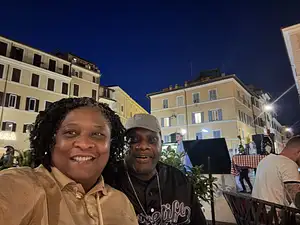
Jessica
Reviewed on:
Aug 30, 2025
